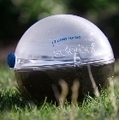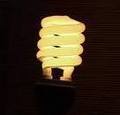LAVA’s Home Of The Future Is A Neon, Geodesic Plant-Filled Bubble
by: Inhabitat , 2011-03-21 22:25:24 UTC










Read the rest of LAVA’s Home Of The Future Is A Neon, Geodesic Plant-Filled Bubblehttp://www.inhabitat.com/wp-admin/ohttp://www.inhabitat.com/wp-admin/options-general.php?page=better_feedptions-general.php?page=better_feed
Permalink |
Add to
del.icio.us |
digg
Post tags: "sustainable architecture", biosphere, china, eco design, eco home, EFTE, ETFE, future archtiecture, futuristic home, geodesic dome, geodesic dome house, green architecture, Green Building, green design, home of the future, LAVA, LAVA's home of the future, rooftop, sustaianble design, Sustainable Building
New SIMBAS Blood Analysis Biochip Can Diagnose Diseases In Minutes
by: Inhabitat , 2011-03-22 13:39:25 UTC

A team of researchers from three universities have developed a lab-on-a-chip that could revolutionize global health care diagnostics. The Self-powered Integrated Microfluidic Blood Analysis System (SIMBAS) is a stand alone biochip that diagnoses diseases within 10 minutes without the use of external tubing. The development is a major milestone in the field of microfluidics.


Read the rest of New SIMBAS Blood Analysis Biochip Can Diagnose Diseases In Minuteshttp://www.inhabitat.com/wp-admin/ohttp://www.inhabitat.com/wp-admin/options-general.php?page=better_feedptions-general.php?page=better_feed
Permalink |
Add to
del.icio.us |
digg
Post tags: berkley simbas, biochip, blood analysis biochip, blood analysis biochip device, global health care, health care, health care developments, lab on a chip, simbas biochip, simbas blood analysis, simbas lab on a chip, uc berkley research
Hawaii to roll-out large scale public electric vehicle charging infrastructure
by: Gizmag Emerging Technology Magazine, 2011-03-21 05:12:23 UTC

AeroVironment and
Better Place are among six organizations to receive a share of US$2.6 million in federal stimulus funding as part of Hawaii's push to boost
electric vehicle infrastructure. AeroVironment's $820,000 contract will see up to 320 of its EV charging docks rolled-out on the islands while the $854,000 awarded to Better Place will support the introduction of EVs to a rental car fleet as well as installation of charging stations...
Continue Reading
Hawaii to roll-out large scale public electric vehicle charging infrastructureTags: AeroVironment,
Better Place,
Electric Vehicles,
EV Charging
Related Articles:


 Simple One bicycle folds to become a shopping cart
Simple One bicycle folds to become a shopping cart
by: Gizmag Emerging Technology Magazine, 2011-03-21 18:37:57 UTC

Of the various cycling goodies that were on display last week at the 2011 International Taipei Bicycle Show, one that stood out for its ingenuity was the Amxma Simple One folding bike. Made by Taiwan’s Long Antelope Enterprise Company, the Simple One is for the most part just like any other folding bicycle – what makes it special is the fact that when it’s folded up, it can be wheeled into your local grocery store and used as a shopping cart...
Continue Reading
Simple One bicycle folds to become a shopping cartTags: Bicycle,
Cart,
Folding,
Shopping
Related Articles:


 New battery technology may allow for complete recharging within minutes
New battery technology may allow for complete recharging within minutes
by: Gizmag Emerging Technology Magazine, 2011-03-21 22:08:35 UTC

Of all the criticisms of electric vehicles, probably the most commonly-heard is that their batteries take too long to recharge – after all, limited range wouldn’t be such a big deal if the cars could be juiced up while out and about, in just a few minutes. Well, while no one is promising anything, new batteries developed at the University of Illinois, Urbana-Champaign do indeed look like they might be a step very much in the right direction. They are said to offer all the advantages of capacitors and batteries, in one unit...
Continue Reading
New battery technology may allow for complete recharging within minutesTags: Batteries,
Charging,
Electric Vehicles,
Recharging,
Thin Film,
University of Illinois
Related Articles:


 Shipwreck Furniture: One of a Kind Nautical Furniture Made from Salvaged Boats
Shipwreck Furniture: One of a Kind Nautical Furniture Made from Salvaged Boats
by: Inhabitat , 2011-03-21 19:40:10 UTC

Shiver me (reclaimed) timbers! Shipwreck Furniture proves that one man’s trash is another man’s booty with its unique furniture crafted from salvaged boat wood. From the Cutlass Coffee Table to the Scurvy Bench to the Flotsam Side Table, their pieces retain the nautical charm of the open seas by openly showcasing the faded paint and weather-worn look of the wood instead of trying to hide it.
+ Shipwreck Furniture



Permalink |
Add to
del.icio.us |
digg
Post tags: "green furniture", cutlass coffee table, eco design, flotsam side table, green design, nautical furniture, Nic Kruger, reclaimed furniture, Recycled Materials, scurvy bench, shipwreck furniture, sustainable design
Brilliant Salt Crystal Lamp is Grown in a Bucket
by: Inhabitat , 2011-03-21 21:05:27 UTC

Swedish designers Apokalyps Labotek mixed chemistry with innovation to create a crystalline lamp made almost entirely from salt. The brilliant lighting fixture emulates the glimmering look of a glass chandelier, and it took virtually no energy or labor to make – the Malmo-based designers simply grew the lamp’s shade using a salt solution and a bucket. Best of all, the lamp can be composted at the end of its life cycle.



Read the rest of Brilliant Salt Crystal Lamp is Grown in a Buckethttp://www.inhabitat.com/wp-admin/ohttp://www.inhabitat.com/wp-admin/options-general.php?page=better_feedptions-general.php?page=better_feed
Permalink |
Add to
del.icio.us |
digg
Post tags: Apokalyps Labotek, Chinese Stonecutters, compostable green consumer product design, Crystal Lamp, eco lamp, green lighting, green materials, green products, solar salt, Swedish green design
Google Headquarters Tests Wireless Electric Vehicle Charging
by: fast company, 2011-03-21 22:49:37 UTC

As if you needed another reason to check out Google headquarters in Mountain View, California, electric vehicle technology startup Evatran announced this week that it has installed a Plugless Power charging station at Google HQ. This is the first public installation of Evatran's wireless EV charger, which uses something called "proximity charging" to juice up Googlers' Nissan Leafs and Tesla Roadsters.
The charging station is made up of a parking block, a control tower that keeps track of whether a car is charging, and an adapter mounted to the vehicle. When an adapter-equipped car pulls up to the parking space, the block adjusts to align with the adapter and starts charging. There is no flow of electricity between the adapter and the parking block--instead, the charger uses electrical induction, which generates power from the connection of two magnetic coils. In this case, the coils are housed inside the parking block and the adapter.
There is a disadvantage compared to the plug and cord variety of EV charger: the Plugless Power stations lose a little bit of energy in the transfer from coil to coil. Evatran plays off the problem on its website, explaining that "although Plugless Power does anticipate a small efficiency loss
(less than 10%), this does not translate to an increased charging time.
The capacity of an EV’s battery to accept charge is not affected by the
efficiency loss. The battery will continue to accept the same amount of
power at one time, but the charger will draw additional watts from the
electrical outlet to compensate for the small efficiency loss."
Evatran doesn't plan on making its vehicle adapter available to everyone on Google's campus. The company will, however, test the technology using a retrofitted short-range EV owned by Google (there are many short-range EVs puttering around the campus). Evatran is working with automakers to integrate its adapter technology into mass-market EVs by next year. No word yet on a sale price for the parking block.
Follow Fast Company on Twitter. Ariel Schwartz can be reached by email.
Read More: Most Innovative Companies: Google


 Vertical farm with wind turbines: Farming in the new age
Vertical farm with wind turbines: Farming in the new age
by: Ecofriend, 2011-03-21 14:48:05 UTC
Attitude:

Seems like we are really hard pressed for land these days and people have decided to expand vertically not just for homes, but also for farms. Hence the concept of vertical farming and people are trying pretty hard to try and come up with a design for vertical farms that will be more acceptable and practically useful across the globe. The Dallas Skyfarm is one such design that tries to localize the idea of vertical farming to get the best out of green energy.

Food in this new design of vertical farm is grown in a shallow hydroponic system that is at the higher levels of the structure while the lower levels shelter larger trees. There are wind turbines which ensure that green energy is produced consistently and that is specifically a feature that is incorporated to tap into the potential of generally windy Dallas.

While the top levels produce food, the lower levels can also be used as green parks and a structure like this will be of minimum intrusion in an urban ecosystem. With population across the globe increasing exponentially, we need to explore new ways of farming that will be less exhausting on the limited land at offer. Designs like the Dallas Skyfarm try and provide a roadmap towards that solution.

Via: Eco Innovation Lab


 Zeth: Temporary Solar home with natural insulation
Zeth: Temporary Solar home with natural insulation
by: Ecofriend, 2011-03-21 15:58:49 UTC
Attitude:

Seems like ‘Zero Emissions’ has indeed become a key aspect of design of green products, technologies, structures and everything else that intends to go clean in its functioning. Now, how many of these are really and completely ‘zero emission designs’ and can completely offset their carbon emissions is open to investigation. But for now we have no reason to doubt that Zeth is well and truly a zero emissions solar home that is easy to set up and serves immaculately in case of disaster management.

We have witnessed the huge disaster that has engulfed Japan and has been the center of attention of world and media for the past couple of weeks. It is when disasters like these strike that the necessity of temporary homes that are quick to build, easy to assemble and disassemble, can light up off of a grid and are autonomous to a large extent become vital. Zeth is one such temporary solar home.

The structure has been built out of local materials and while it might not be suitable for every crisis, it offers a potential ‘long term’ solution to the shelter problem. It can be used for a considerable period of time and its solar panels ensure that you need not wait for power lines to be put back in place for energy needs. Its natural insulation system offers both heating and cooling solutions with shades and air circulation system that keep temperature inside moderate.

The simple yet highly useful structure can be easily disassembled when people get back to their homes and its components can be either reused or recycled for another purpose and hence the issue of waste and landfills does not arise. The advantage of green energy is not just the fact that it is planet-friendly, but in moments like these it can work ‘off-grid ‘ as well and it is highlighted in such temporary home designs.

Via: Architetturaleggera













Comments by our Users
Be the first to write a comment for this item.